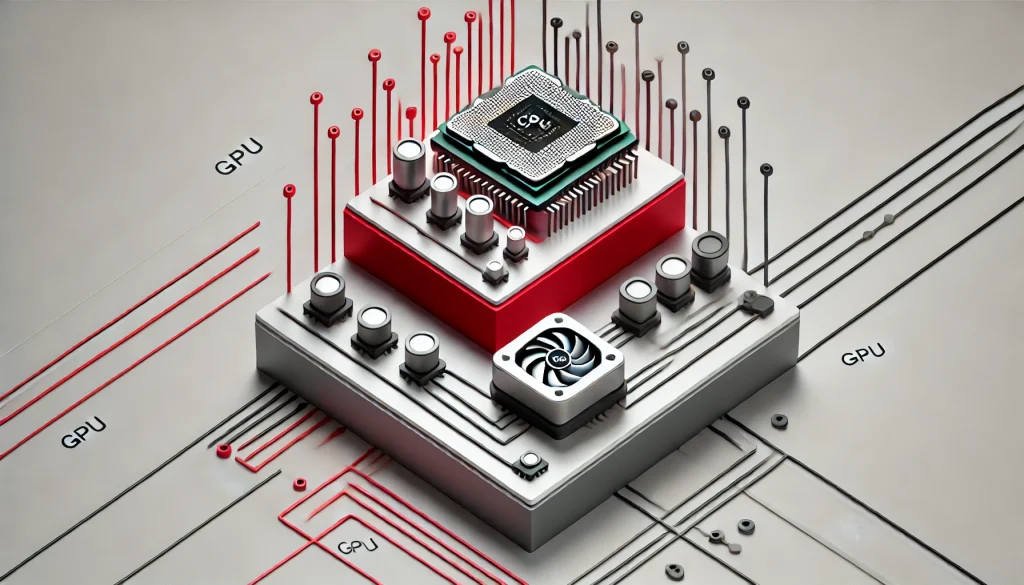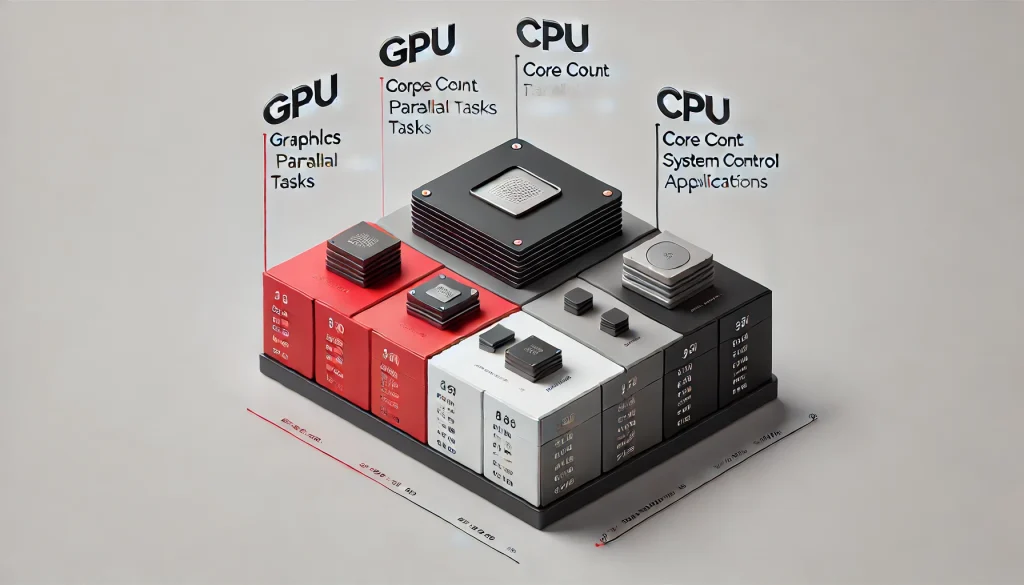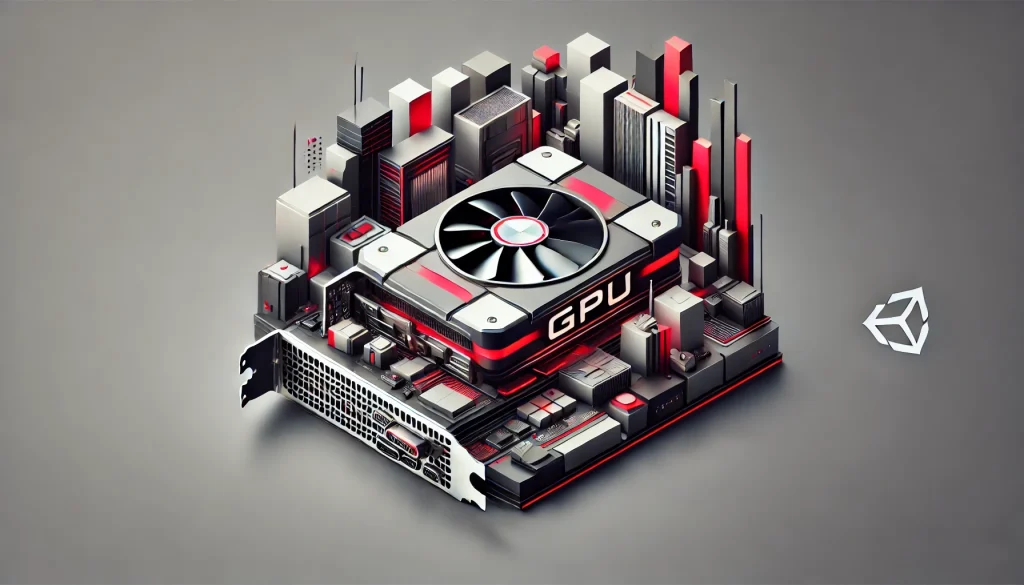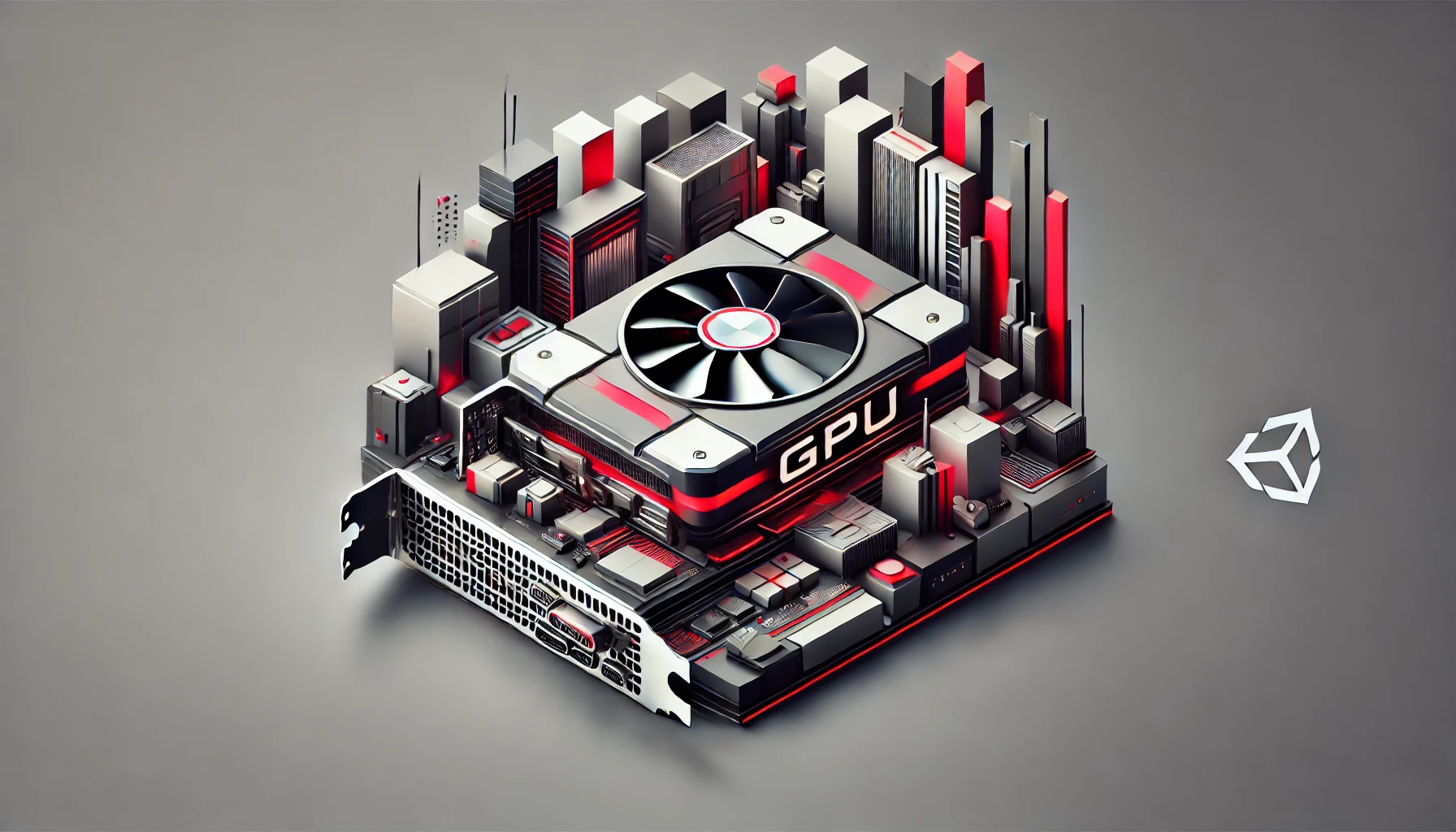
GPUs (Graphics Processing Units) and CPUs (Central Processing Units) are two crucial components in modern computing. The CPU, often called the “brain” of the computer, handles general-purpose tasks. Meanwhile, the GPU excels in parallel processing, making it ideal for graphics and data-heavy workloads. Both components serve essential roles, but their functionalities differ depending on the task at hand. Understanding the distinction between GPU and CPU is important for anyone building or upgrading a computer, whether for gaming, professional use, or data processing. Knowing which component to prioritize can make a significant difference in performance and efficiency.
Overview of GPU and CPU
The Graphics Processing Unit (GPU) is designed for parallel processing, excelling in handling large volumes of data simultaneously. Originally developed to handle rendering and visual tasks, GPUs are now integral for graphics rendering, gaming, and video editing, providing smooth visuals and managing complex textures. However, the role of GPUs has expanded into other areas such as machine learning, AI, and cryptocurrency mining, where the ability to handle multiple tasks at once is critical.
GPUs have thousands of smaller cores designed to perform basic tasks simultaneously, which makes them highly efficient for operations that can be broken down into smaller tasks. These include rendering millions of pixels in a game or video or processing large datasets in AI algorithms. The GPU’s specialized architecture enables it to handle the immense data processing requirements involved in 3D rendering or scientific computing, making it essential for modern technological advancements.
On the other hand, the Central Processing Unit (CPU), often called the brain of the computer, handles most of the system’s general operations and processing instructions. CPUs are designed for sequential task execution, making them ideal for managing everyday computing activities like running applications, executing commands, and managing data. It uses a limited number of powerful cores to perform complex tasks, such as calculations and logic-based operations, with high precision. The CPU is essential for running the operating system, handling background processes, and managing communication between hardware and software components.
While CPUs are optimized for a broad range of tasks, they are especially suited for those that require logical flow and execution, such as managing data input/output and system operations. They excel at tasks that require a series of complex steps to be processed quickly and accurately, like managing documents, browsing the web, or handling system-level instructions.
Key Differences Between GPU and CPU

| Feature | CPU | GPU |
|---|---|---|
| Purpose | General computing tasks | Graphics rendering, parallel processing |
| Core Count | Fewer, powerful cores | Thousands of smaller cores |
| Processing Power | Great for sequential processing | Optimized for parallel tasks |
| Applications | Operating systems, apps | Gaming, AI, machine learning |
GPU for Gaming and Graphics

GPUs are the powerhouse behind high-quality graphics in modern gaming. They process large amounts of data quickly, ensuring that games render smooth, high-resolution images in real-time. The ability to handle multiple tasks simultaneously allows GPUs to maintain consistent frame rates, reducing lag and screen tearing, which are common issues in graphic-heavy games. Additionally, GPUs enhance 3D rendering, providing lifelike textures and immersive environments. Beyond gaming, GPUs are also vital for video editors and graphic designers working with high-resolution images and video content, as they help reduce rendering times significantly.
CPU for General Computing
CPUs are critical for handling general computing tasks such as managing the operating system, running applications, and processing input from the user. While they aren’t designed for heavy parallel processing, CPUs excel in running linear and logical tasks with precision. Whether you are browsing the internet, editing documents, or handling emails, the CPU is key to ensuring that these everyday processes run efficiently.
Applications of GPU in Machine Learning and AI
Beyond gaming, GPUs are transforming fields like machine learning and AI. Their ability to process thousands of tasks in parallel makes them perfect for training neural networks and large AI models. In areas such as image recognition, natural language processing, and data analysis, GPUs dramatically reduce the time it takes to train AI systems. For example, tasks that might take days with a CPU can be completed in hours with a GPU. As AI continues to evolve, GPUs will remain central to the development of more advanced machine learning models and real-time data processing.
Pros and Cons of GPU and CPU
CPU Pros: CPUs are versatile and can handle a wide variety of tasks, from running applications to managing operating systems. They are great for precision-based operations that require logical processing and decision-making.
CPU Cons: However, CPUs are less efficient when handling massive parallel tasks and have fewer cores, limiting their ability to manage intensive graphical workloads like video rendering or gaming.
GPU Pros: GPUs excel at parallel processing, making them perfect for rendering high-quality graphics, video editing, gaming, and AI development. They outperform CPUs in managing large-scale data and simultaneous tasks.
GPU Cons: On the downside, GPUs are not well-suited for general-purpose computing tasks. They also consume more power and generate more heat, which can be a drawback in systems where energy efficiency is important.
Comparison of Use Cases
| Use Case | Best for CPU | Best for GPU |
|---|---|---|
| Office tasks | CPU | Not necessary |
| Gaming | Limited CPU use | Essential for high performance |
| Video rendering | Can manage small projects | Optimal for large projects |
| AI and machine learning | Limited use | Essential for model training |
Fun Facts About CPUs and GPUs
- The first commercial CPU, the Intel 4004, was introduced in 1971 and revolutionized computing.
- GPUs were originally developed for gaming graphics but are now key to fields like cryptocurrency mining and AI research.
- Modern CPUs typically feature 4 to 16 cores, while GPUs contain thousands of smaller cores designed for parallel tasks.
Conclusion
In conclusion, both the CPU and GPU are essential in modern computing, but they serve different purposes. The CPU is critical for general computing tasks like running applications and managing the system’s core functions. In contrast, the GPU shines in areas requiring parallel processing, such as gaming, video rendering, and AI development. As technology evolves, the need for both components grows, with each playing a unique role in maximizing a system’s performance. Whether you’re a gamer, a professional content creator, or an AI developer, having the right balance of CPU and GPU power will ensure that your system runs smoothly and efficiently.
Resources
- Tom’s Hardware. CPU vs. GPU: Upgrade Benchmarks
- How-To Geek. CPU vs. GPU: What’s the Difference?
- Intel. CPU vs. GPU
- Lifewire. CPU vs. GPU
- DigitalOcean. CPU vs. GPU

Brijesh Gohil is the founder of Tech Brij, A popular Tech Blog which is focused on Tech tips & Buying Guides. You can follow him on Facebook, Twitter, Google + & LinkedIn.

